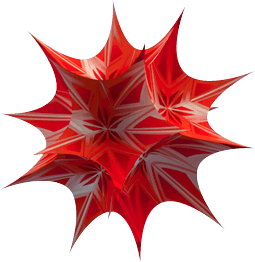Periodic Solutions - Van der Pol’s Equation
In a 1924 study of oscillator circuits in early commercial radios, Balthasar van der Pol (1889–1959) assumed the voltage drop to be given by a nonlinear function of the form f(I)=aI3−bI, which leads to the differential equation
x''+k(x2-1)x'+x=0
For every nonnegative value of the parameter k, the solution of van der Pol’s equation with x(0)=2, x′(0)=0 is periodic, and the corresponding phase plane trajectory is a limit cycle to which the other trajectories converge. It will be instructive for you to solve van der Pol’s equation numerically and to plot this periodic trajectory for a selection of values from k=0 to k=1000 or more. With k=0 it is a circle of radius 2. Next figure shows the periodic trajectory with k=1.


The figure illustrates the x(t) and y(t) solution curves defining the periodic solution of van der Pol’s equation with k equals 1.


When k is large, van der Pol’s equation is quite “stiff” and the periodic trajectory is more eccentric. The figures illustrates the phase plane trajectories of the periodic solution of van der Pol’s equation with k equals 5 and 1000.


For large k x(t) and y(t) solution curves reveal surprising behavior of these component functions. Each alternates long intervals of very slow change with periods of abrupt change during very short time intervals that correspond to the “quasi-discontinuities”.


For instance, if k=1000 then between t=1614.28 and t=1614.29, the value of y(t) zooms from near zero to over 1300 and back again. Perhaps you can measure the distance between x- or y-intercepts to show that the period of circuit around the cycle is approximately T=1614.

Indeed, this calculation and the construction of figures like those shown here may serve as a good test of the robustness of your computer system’s ODE solver.
Your Turn
You might also plot other trajectories for k=10, 100 or 1000 that are “attracted” from within and without by the limit cycle. The origin looks like a spiral point. Indeed, show that (0, 0) is a spiral source for van der Pol’s equation if 0<k<2 but is a nodal source if k is greater than 2.







